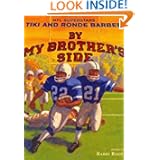1. I conducted two running records, one on a
student whose primary language is Spanish, and one that speaks French. The boy who speaks Spanish has been in the US
school system for two years and he is in an ELA-S classroom, receives ELA
services in addition to a small reading group.
The running records was from a program that he is in for tier two
intervention and it was a story he had read before, called Road Builders. Looking at
his overall score he scored 94% accuracy rate and satisfactory for key
understandings. Syntax, the organization of words in sentences: the
ordering of and relationship between the words and other structural elements in
phrases and sentences (Freeman, Freeman, 2004).
This student had a good syntax, he did not re-order the words and
primarily read in two-word phrases with some three-and four-word reading
phrases, reading was pretty smooth. The
words he missed were simple words and when I asked him to look at them again at
the end he was able to pronounce them. When
looking at meaning, at the end he was able to discuss what happened first,
second, and last, the book was about building a road. For visual cues, the book was in front of him
and he had read it before and I think this helped on a couple of words he
self-corrected, the naming of the machines, because he had the picture in front
of him. Strategies for this student
include keeping visuals available and to work on fluency by modeling.
2. The second student has been in the US for
at least five years, his parents speak French fluently at home, and he is an
ELA student but is in a general education classroom most of the day except for
a small reading group with other ELA students.
This student has great comprehension and the book we read was also one
he had seen before so I think the pictures were a great help to make meaning of
the story, Remya Jose’s Invention. The
story was about a girl from a different country that invents a nonelectrical
washing machine. He related because like
the girl in the story he has to do many of the same chores at home, and he
cares for his younger siblings. When it
came to syntax, he re-ordered some words around or substituted words, but it
didn’t take away from the meaning.
However, is overall fluency was in the 90% because of these mistakes. He speaks very quietly so some of the words I
had to point to again and he would same them correctly, this also effected the
time and because of the time limit he did not pass this running record. Strategies for him would to work on fluency
and using his finger to track so he doesn’t skip or reorder words. In addition I think with more practice his
confidence will improve and he will become a stronger reader.



